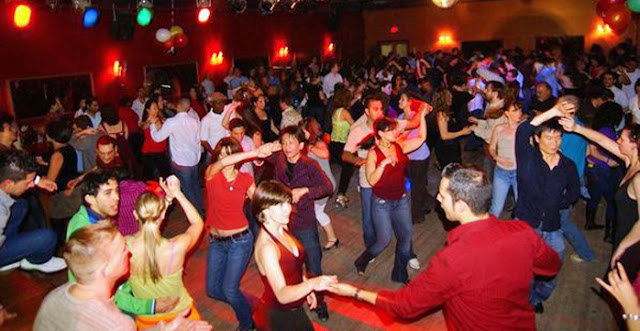As dancing continued to progress, many International dancers at the Palladium began to insist that they were the real Ballroom Dancers on Oahu because they danced in Ballrooms. Let us face it, the Rootzi Tootzis are right, we could not be Ballroom Dancers on Oahu. We dance in malls, gas stations, parks, school cafeterias, district parks and community centers.They have pointed out this distinction very clearly and we concur. No hu hu, just understanding.
"Social dancers were afraid of dancing in the beginning, but they learned
Ballroom dancing has been “ a living thing influenced by events and sensitive to what is going on all around,” whether it be “a change of fashion, war, an upsurge of interest in a particular foreign, country, pop and/or Latin music. And it brings us to the most logical conclusion, we are Social Dancers, let us make the most of it. The transitory nature of social dancing is what makes it so exciting to study and the terminology may change within the context of globalization.
"Take On Me" by A-Ha (1985)
We have tried to examine the ways in which ballroom and social dancing have evolved due to cross cultural contributions, whether borrowed or appropriated from street dancers. We can hope to provide insight into the role that globalization has had on ballroom as a genre. In fact, we can propose that it is globalization, and its influence on social dancing's shifting form and popularity, that has allowed our form to evolve for as long as it has. Meanwhile, we can enjoy moving to music our way and having a ball.
"Social dancers were afraid of dancing in the beginning, but they learned
to embrace it and accept all the mistakes they would make."
Ballroom dancing has been “ a living thing influenced by events and sensitive to what is going on all around,” whether it be “a change of fashion, war, an upsurge of interest in a particular foreign, country, pop and/or Latin music. And it brings us to the most logical conclusion, we are Social Dancers, let us make the most of it. The transitory nature of social dancing is what makes it so exciting to study and the terminology may change within the context of globalization.
"Take On Me" by A-Ha (1985)
We have tried to examine the ways in which ballroom and social dancing have evolved due to cross cultural contributions, whether borrowed or appropriated from street dancers. We can hope to provide insight into the role that globalization has had on ballroom as a genre. In fact, we can propose that it is globalization, and its influence on social dancing's shifting form and popularity, that has allowed our form to evolve for as long as it has. Meanwhile, we can enjoy moving to music our way and having a ball.
Book not recommended: "Twenty Yards to the Outhouse" by Willie Makit,
Illustrated by Betty Wont - Published by Andy Dint
Illustrated by Betty Wont - Published by Andy Dint




No comments:
Post a Comment
Note: Only a member of this blog may post a comment.